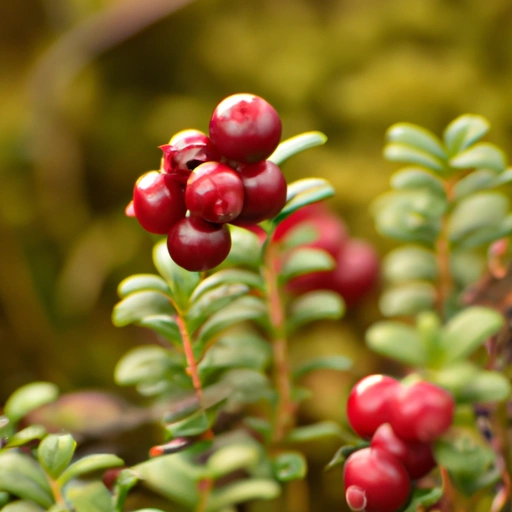Lingonberry
Description

Lingonberries, known scientifically as Vaccinium vitis-idaea, are small, red berries that resemble cranberries but with a more tart flavor. These berries are widely used in various cuisines and known for their bright, acidic punch which can elevate a multitude of dishes. Grown in the wild, lingonberries are primarily harvested in the Northern Hemisphere, thriving in the boreal forests and Arctic tundra of Scandinavia, Russia, Canada, and the northern United States.
Common uses
Lingonberries are often served as a condiment in the form of jams, jellies, and sauces. They are also used as a flavoring in beverages, baked goods, and desserts. In addition to sweet applications, their tart flavor can complement savory dishes like meatballs, stews, and game meats.
Nutritional value
Calories
Approximately 50 calories per 100 grams (3.5 oz or about 2/3 cup).
Protein
Contains around 0.7 grams per 100 grams (3.5 oz).
Fat
Contains a minimal amount of fat, with around 0.5 grams per 100 grams (3.5 oz).
Carbohydrates
Contains about 12 grams of carbohydrates per 100 grams (3.5 oz), mostly from natural sugars and dietary fiber.
Vitamins
Rich in vitamin C and also contains vitamin E, vitamin A, and B-complex vitamins.
Minerals
Provides minerals like potassium, calcium, magnesium, and phosphorus.
Health benefits
Lingonberries are considered a superfood due to their high antioxidant content, including flavonoids and lignans, which may help protect cells from damage. They are also believed to promote heart health, support a healthy immune system, and may have anti-inflammatory properties.
Potential risks
Generally, lingonberries are safe to eat for most individuals. However, those who are sensitive or allergic to berries should proceed with caution. Due to their natural acidity, excessive consumption might cause stomach discomfort in some people.
Common recipes
Lingonberry jam is a staple in Scandinavian cuisine, used as a topping for pancakes, waffles, and yogurt, as well as a sweet-tart accompaniment to savory dishes such as Swedish meatballs and potato pancakes.
Cooking methods
While often eaten raw or as a preserve, lingonberries can also be cooked down into sauces, incorporated into syrups, or baked into pastries.
Pairing with other ingredients
Their tartness pairs well with rich meats like pork and duck, creamy dishes, and sweet baked goods. They also complement other berries and fruits in tarts, pies, and crumbles.
Summary
Lingonberries are a versatile and nutritious ingredient with a unique tart flavor, making them a valuable addition to both sweet and savory dishes. With their rich history and cultural significance, they offer an authentic taste of Northern European cuisine that can be appreciated by food enthusiasts around the globe.